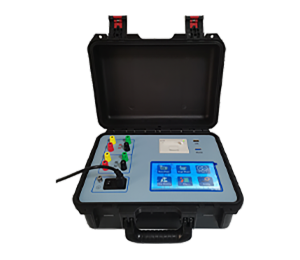 English
English



-
 Afrikaans
Afrikaans -
 Albanian
Albanian -
 Amharic
Amharic -
 Arabic
Arabic -
 Armenian
Armenian -
 Azerbaijani
Azerbaijani -
 Basque
Basque -
 Belarusian
Belarusian -
 Bengali
Bengali -
 Bosnian
Bosnian -
 Bulgarian
Bulgarian -
 Catalan
Catalan -
 Cebuano
Cebuano -
 China
China -
 China (Taiwan)
China (Taiwan) -
 Corsican
Corsican -
 Croatian
Croatian -
 Czech
Czech -
 Danish
Danish -
 Dutch
Dutch -
 English
English -
 Esperanto
Esperanto -
 Estonian
Estonian -
 Finnish
Finnish -
 French
French -
 Frisian
Frisian -
 Galician
Galician -
 Georgian
Georgian -
 German
German -
 Greek
Greek -
 Gujarati
Gujarati -
 Haitian Creole
Haitian Creole -
 hausa
hausa -
 hawaiian
hawaiian -
 Hebrew
Hebrew -
 Hindi
Hindi -
 Miao
Miao -
 Hungarian
Hungarian -
 Icelandic
Icelandic -
 igbo
igbo -
 Indonesian
Indonesian -
 irish
irish -
 Italian
Italian -
 Japanese
Japanese -
 Javanese
Javanese -
 Kannada
Kannada -
 kazakh
kazakh -
 Khmer
Khmer -
 Rwandese
Rwandese -
 Korean
Korean -
 Kurdish
Kurdish -
 Kyrgyz
Kyrgyz -
 Lao
Lao -
 Latin
Latin -
 Latvian
Latvian -
 Lithuanian
Lithuanian -
 Luxembourgish
Luxembourgish -
 Macedonian
Macedonian -
 Malgashi
Malgashi -
 Malay
Malay -
 Malayalam
Malayalam -
 Maltese
Maltese -
 Maori
Maori -
 Marathi
Marathi -
 Mongolian
Mongolian -
 Myanmar
Myanmar -
 Nepali
Nepali -
 Norwegian
Norwegian -
 Norwegian
Norwegian -
 Occitan
Occitan -
 Pashto
Pashto -
 Persian
Persian -
 Polish
Polish -
 Portuguese
Portuguese -
 Punjabi
Punjabi -
 Romanian
Romanian -
 Russian
Russian -
 Samoan
Samoan -
 Scottish Gaelic
Scottish Gaelic -
 Serbian
Serbian -
 Sesotho
Sesotho -
 Shona
Shona -
 Sindhi
Sindhi -
 Sinhala
Sinhala -
 Slovak
Slovak -
 Slovenian
Slovenian -
 Somali
Somali -
 Spanish
Spanish -
 Sundanese
Sundanese -
 Swahili
Swahili -
 Swedish
Swedish -
 Tagalog
Tagalog -
 Tajik
Tajik -
 Tamil
Tamil -
 Tatar
Tatar -
 Telugu
Telugu -
 Thai
Thai -
 Turkish
Turkish -
 Turkmen
Turkmen -
 Ukrainian
Ukrainian -
 Urdu
Urdu -
 Uighur
Uighur -
 Uzbek
Uzbek -
 Vietnamese
Vietnamese -
 Welsh
Welsh -
 Bantu
Bantu -
 Yiddish
Yiddish -
 Yoruba
Yoruba -
 Zulu
Zulu
A Guide to Efficient Transformer Ratio Testing Techniques and Best Practices
Understanding the Transformer Ratio Tester A Key Tool in Electrical Engineering
In the realm of electrical engineering, particularly in the design and maintenance of transformers, the importance of accurate measurement cannot be overstated. One essential device that plays a critical role in ensuring the proper functionality of transformers is the transformer ratio tester. This specialized equipment serves to evaluate the turns ratio of a transformer, which is fundamental in determining its performance efficiency and operational integrity.
What Is a Transformer Ratio Tester?
A transformer ratio tester is an electrical device designed to measure the turns ratio, or voltage ratio, between the primary and secondary windings of a transformer. This measurement is vital because the turns ratio directly influences how the transformer converts voltage levels between circuits. The tester provides insights into whether a transformer is functioning correctly or if it has developed faults that could lead to costly failures or unsafe operating conditions.
The Importance of Turns Ratio
The turns ratio of a transformer is defined as the ratio of the number of turns of wire in the primary winding to the number of turns in the secondary winding. For instance, a transformer with a turns ratio of 101 implies that for every 10 volts entering the primary winding, 1 volt is expected to emerge from the secondary. If this ratio deviates significantly from the design specifications, it might indicate unwarranted changes in the winding, such as insulation degradation or short circuits.
Employing a transformer ratio tester allows engineers and technicians to quickly assess the operational condition of a transformer without the need for extensive disassembly or testing under load conditions
. This facilitates more efficient maintenance schedules and helps mitigate unexpected outages in power distribution networks.How Does a Transformer Ratio Tester Work?
transformer ratio tester

Transformer ratio testers typically operate on the principle of applying an AC voltage to the primary side of the transformer under examination while measuring the resulting voltage on the secondary side. The tester then calculates the turns ratio by comparing the input and output voltages.
Modern testers are often equipped with digital readouts and can store multiple test results, which simplifies monitoring for trends over time. Additionally, some advanced models integrate features that can detect and report various forms of voltage harmonics or imbalance, providing an even deeper analysis of transformer health.
Types of Transformer Ratio Testers
Several types of transformer ratio testers are available, each designed for specific applications and requirements. The two main categories are
1. Manual Ratio Testers These devices typically require an operator to conduct measurements manually. They are often less expensive but demand more skill and time for accurate operation.
2. Automatic Ratio Testers These more advanced testers automate the testing process, allowing for faster and more accurate measurements. They often include additional diagnostic features, such as fault detection and data logging capabilities, making them suitable for professional use in utility companies and large-scale industrial applications.
Conclusion
In summary, the transformer ratio tester is an indispensable tool in the field of electrical engineering. By providing accurate readings of the turns ratio, it aids in assessing transformer performance and condition, ultimately contributing to the reliability and efficiency of electrical power systems. As technology continues to advance, the capabilities of transformer ratio testers will evolve, ensuring they remain at the forefront of transformer diagnostics and maintenance. Whether it is for routine checks or emergency assessments, the transformer ratio tester will continue to be a key asset for engineers and technicians in maintaining the integrity of the electrical infrastructure.
-
Testing Equipment Industry Sees Major Advancements in 2025: Smart & Precision Technologies Lead the WayNewsJun.06,2025
-
Applications of Direct Current Generators in Renewable Energy SystemsNewsJun.05,2025
-
Hipot Tester Calibration and Accuracy GuidelinesNewsJun.05,2025
-
Digital Circuit Breaker Analyzer Features and BenefitsNewsJun.05,2025
-
Benefits of Real-Time Power Quality Monitoring Devices for Industrial EfficiencyNewsJun.05,2025
-
Earth Fault Loop Testing in High-Rise Building Electrical SystemsNewsJun.05,2025



